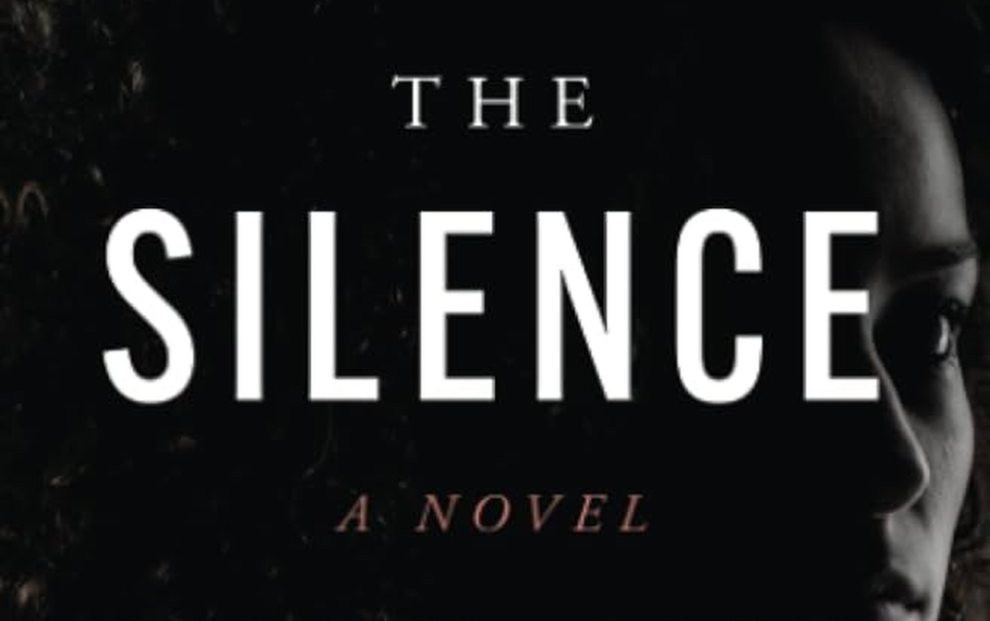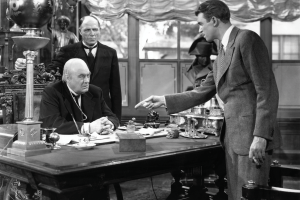Massachusetts-based writer Mary McGarry Morris suspects her 2024 novel The Silence (Open Road Integrated Media, Inc.) was too hard hitting to have garnered much attention from mainstream media book reviewers. Either that, or the post-COVID market shift to easier reading romantic comedies has dulled the public’s taste for more provocative reads.
The Silence, which opens with the murder of an 8-year-old girl by a predator priest in small-town Vermont, is likely to disturb the collective Catholic conscience, in light of the priestly abuse scandals of recent decades. While plenty of nonfiction books exist outlining the crimes and attempted cover-ups, The Silence is one of the few fictional treatments of the abuse epidemic. Some readers might be uneasy with this story and view Morris as a disaffected Catholic leveraging the scandals to attack the church and all it stands for. But she remains a questioning believer who recognizes the church’s virtues while refusing to deny its many serious errors.
“As a child of divorce in the 1950s, I found great comfort and security in my Roman Catholic faith even though this same church condemned my mother for divorcing my alcoholic father,” Morris says. “And yet I saw my mother say her nightly prayers on her knees. My seeds of doubt were sprouting then.”
But in writing The Silence, Morris may have ruffled one too many feathers. “I’ll be surprised—and profoundly impressed—if any [book reviewers] will want to deal with its subject matter,” she says.
And to be sure, that “subject matter” is disturbing. The Silence is told from the point of view of Ruth Corrigan, a present-day police officer in the fictional town in Vermont, who as a child, narrowly escaped murder at the hands of a newly ordained Catholic priest, Father Phil Woodman. Ruth had been out walking with her 8-year-old school classmate Ceely Pardeau in the fields near their elementary school. The two girls separate after a childish spat, leaving Ceely alone and vulnerable to the predatory priest.
The predator avoids capture, and an innocent derelict is later convicted of the crime. But the murder hangs over the small community like a black cloud. As the years go by, the same Father Woodman emerges from a rehabilitation center, only to be reassigned to the local Catholic parish, where he celebrates Mass and hears confessions as if the crime had never occurred. The predator priest continues to look for young victims in the community.
In adulthood, a cynical, jaded Ruth Corrigan harbors suspicions against Father Woodman but is rebuffed in trying to find justice for her slain childhood friend. The narrative unfolds with Ruth’s efforts to get to the truth of the matter despite opposition from a mainly Catholic community in denial about a priest’s ability to commit such evil. Even the mother of the slain 8-year-old refuses to accept that a priest could have murdered her child.
To date, Morris has published nine novels. Her first book, Vanished (Penguin Books) established the recurring motif in much of the author’s work—essentially that of vulnerable innocents longing to give and receive love and never quite understanding how it might come about. Her second release, A Dangerous Woman (Penguin Books) again featured a vulnerable female protagonist looking for love and acceptance and finding nothing but rejection and loneliness. Time magazine selected A Dangerous Woman as one of the five best novels of 1991.
Perhaps her best-known work is Songs in Ordinary Time (Penguin Books), a 700-plus page epic describing the quiet yearnings, dreams, and disappointments of a Vermont community in the early 1960s. The book was selected as one of TV personality Oprah Winfrey’s favorite reads of 1995, an event that not only promoted book sales but also brought Morris to the attention of a wider reading public. In many ways, Songs in Ordinary Time captures Morris’s experience as the child of an alcoholic father and a divorced but still Mass-going mother.
“My 12 years of Catholic school education provided me with the security I needed when I was young,” Morris says. “I was a great believer and found hope, comfort, and angst in a religion that condemned my hard-working mother for divorcing my alcoholic father and then remarrying a wonderful man who helped her raise us. As comforting as my Catholicism was, it was also confusing and often contradictory.” But, Morris says, Catholicism gave her an appreciation of spirituality and of the courage to put hard-earned truth before all else. The search for truth has been with her throughout her writing life as she continues to question and ask “why?”
Morris came to fiction rather late in life. The Connecticut-born, Vermont-raised writer served as a social worker with the Massachusetts Department of Public Welfare for several years until she began writing fiction in the 1980s. She labored many years composing her debut novel, Vanished, and its reception provided enough motivation to make a go at the fulltime writing life.
Most of Morris’s works feature strongly Catholic themes and content. Many of the protagonists and supporting characters are Catholics struggling to remain true to a church that at times seems removed from everyday realities. The senior priests, monsignors, and even bishops in Morris’s novels come across as mere administrators rather than committed pastoral shepherds. Morris’s younger priest characters are often confused and troubled, and their youthful ideals of doing more for the community than celebrating Mass are thwarted by jaded, burned out superiors. While the author appreciates the efforts of committed faith leaders—including some of her relatives who worked in religious communities—she suggests via her priest characters’ behavior that something might be askew in their formation. Her work often alludes to the difficulties many priests encounter in living celibate lives.
In The Silence, Father Woodman hides his psychological illness behind his priesthood. His superiors are gagged and bound by institutional rules, many of which exist to this day. Woodman’s mother blames the church’s celibacy rule as an unnatural expectation for anyone subject to ordinary human desires.
“Celibacy doesn’t cause perversions,” Morris says, “but it seems so unnecessary and stunting in normal life.”
This is not to suggest that Morris has soured on all priests and religious. “A beloved relative of mine was one of the finest and most devoted members of the clergy I’ve ever known,” she says. “I’m also an admirer and supporter of Catholic organizations, especially schools and hospitals whose mission is helping people without blind obeisance to religious mandates.” Morris also speaks of a relative who became a religious brother and tried to help anyone in need: “In his eyes no one was hopeless,” she says. “His energy and enthusiastic belief that the worst among us deserve our compassion and help were contagious. And yet he often struggled to get around or past the institutional gatekeepers.”
Morris’s discussion of priestly wrongdoing, and a community’s inability to face the truth, forms the narrative tension in The Silence. The book is a timely fictional answer to the church’s abuse scandals of recent decades. The very title, The Silence is a subtle indictment of witnesses who remain silent in the face of violence, abuse, and murder. Morris forces readers to consider the outcomes of wilful indifference—and wilful silence.
Midway through the novel, the protagonist Ruth Corrigan confronts Father Woodman’s pastor, Father Barzak, with the knowledge of the murder. When the pastor refuses to believe what has happened, Ruth remonstrates: “But now you’re part of it too. And isn’t that what makes a sin? Looking the other way? Doing nothing?”
Morris admits that The Silence attempts to capture the atmosphere of devastation and loss of trust in the wake of the priestly abuse scandal and cover-ups. “When the revelation of priestly crimes first came to light, especially here in the Northeast, there was pain, disillusionment but not always surprise,” Morris says. “As with all truth, it was the beginning of a new reality. Priests could be sinners, the church could be fallible—leaving little room for hypocrisy or blind faith. And from then on, victims across the country, indeed the world, could find support and courage enough to speak their painful, personal truths.” When Morris portrays disenchantment with the church, she says, this comes from its “rigidity as well as its own excesses.”
Morris is adept at delving into her characters’ inner thoughts and motivations. Even villains, such as Father Woodman, look to absolve themselves with their own rationalizations and an overwhelming sense of victimhood. As Woodman muses after his deeds are fully exposed: “It’s publicity, the spotlight they [abuse victims] all want. Attention-mongers, that’s what they are. Say anything to claim their 15-minutes of fame. And the money, of course. Their payoff. That’s what this country’s come to. Everyone’s a victim.”
Another recurring theme in her canon is the plight of independent-minded women unafraid to voice the truth as they see it. While her female protagonists are not Miss Congeniality candidates, they stand out for being true to themselves and refusing to ignore dishonesty, injustice, and the lies people tell each other.
“If people think many of my female protagonists aren’t very likeable, it’s because I’m more interested in complex characters than happily-ever-after fluff,” Morris says. “Examining someone’s problems is the surest way to understand who they really are. Curiosity, empathy—a writer’s best tools.”
Many of Morris’s characters, particularly women, observe life from the sidelines. They long to give and receive love and acceptance, but their plain speaking and unwillingness to abide hypocrisy and dishonesty leave them vulnerable and alone. As the character Fiona Range demonstrates in the novel of the same name: “What she didn’t understand was why she kept ending up alone in this same cramped space. No matter how hard she tried she could only get so far before being yanked back by an invisible tether.”
Like the characters created by Flannery O’Connor, Morris’s people often suffer deeply in their search for redemption and presumably, saving grace. As Morris explains, “As a student first reading Flannery O’Connor, I was instantly and joyfully transported to a fertile land I well knew. I realized I’d discovered a kindred spirit and that my offbeat, wounded, and wounding characters were acceptable literary subjects. I’d always known people like them—my alcoholic father for one.”
Morris cites her Catholic upbringing as influencing her work. “My Catholic upbringing was vitally important because it instilled lifelong values of goodness, hope and a reverence for kindness and empathy. As my writing life has progressed, so has this stronger faith in my own judgment,” she says. But she also says she was shocked during my first visit to the Vatican, to see all the gold, treasures, and art, given the hunger and poverty in the world and the financial need in so many local churches.
Even as a schoolgirl, Morris questioned why she had to confess her sins to a priest. Why, she wondered, couldn’t she tell them directly to an all-seeing, all-knowing God, if God was everywhere? However, she says, just entertaining such thoughts was frightening at the time. But she’s learned to get over that.
“Saints are nice to know about. Thrones are merely furniture. Papal decrees are well-intentioned, but little more. Religion can be a welcome and often necessary haven. Our souls ache for a being, a spirit, something or someone higher, more powerful than ourselves. But in the end, we are left with the acceptance of our own frail humanity and our need to do better along the way.”
As to her aspirations about the church’s future direction, Morris is taking a long view. “I may hope that the church might reform or evolve into better things but my guess is that it will take decades for substantial change,” she says.
Morris’s forthcoming book is titled The Bookkeeper, a story of Grace, a woman so devoted to her exploitative boss and his company that she will risk everything for his attention and well-being. It promises to be another complex character study. How much Catholic content will show up in Morris’s new book remains to be seen, but there is almost certain to be something that will prick a believer’s conscience.
The author is cagey in describing what sort of Catholic she is today. And if notes of anger, helplessness and confusion flavor many of her stories, there is always a glimmer of some future reward.
“There is no label for my beliefs,” Morris confesses. “I’m grateful for my Catholic upbringing. It taught me that I was part of something greater and more profound than I would ever understand. It kept me safe. Taught me that I mattered. And it fostered an unquenchable hope.”
Image: The Silence by Mary McGarry Morris, cover












Add comment